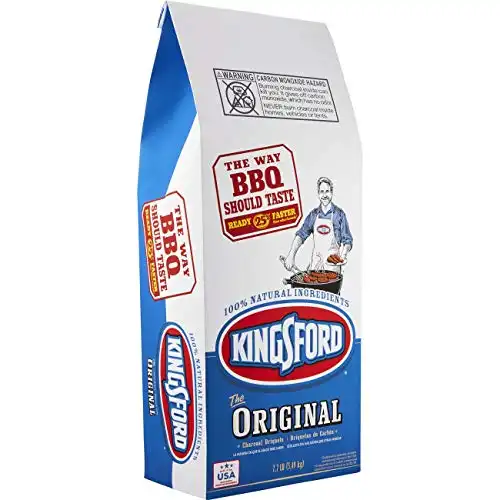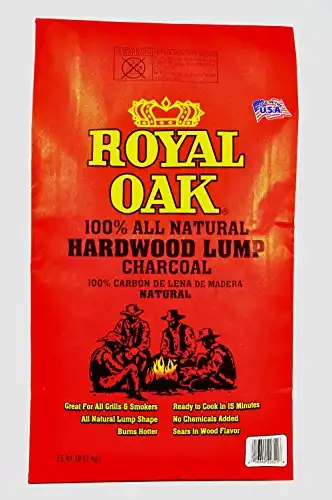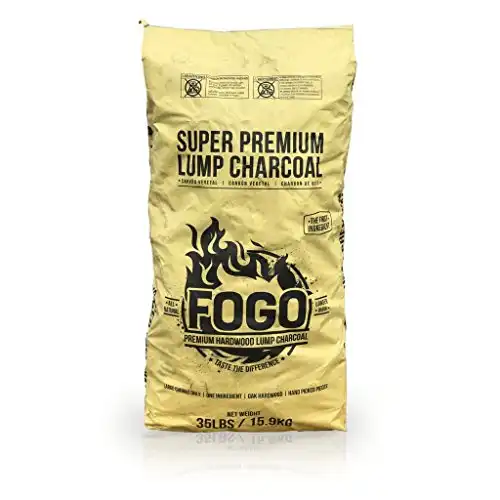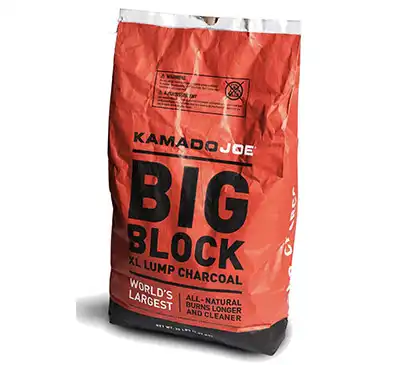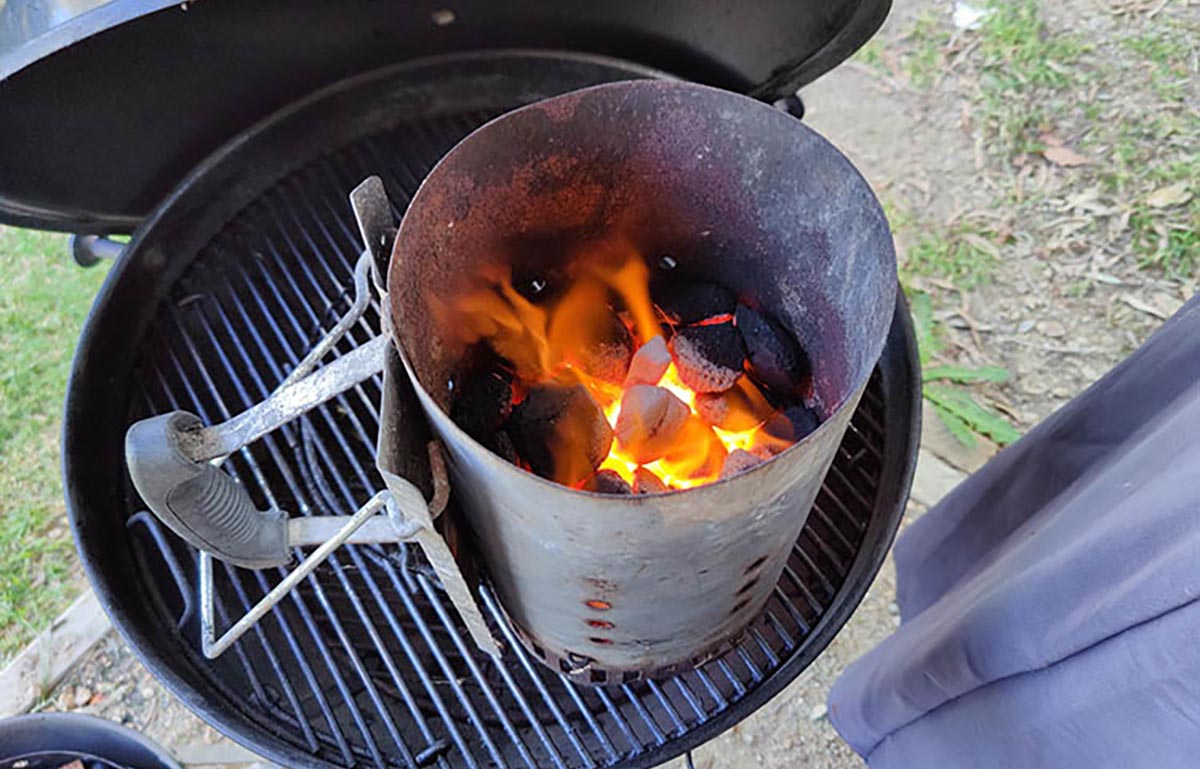Ultimate Charcoal Guide: Learn How Charcoal is Made and What’s Really in Your Fuel

Charcoal is an awesome fuel to fire up your grill, with a reliable burn and a low smoke output. A popular fuel, the global BBQ charcoal market was valued at 1.72 billion US dollars in 2018 and continues to grow.
If you’ve ever wondered whether it’s possible to make your own grilling charcoal, you’re in luck! In this in-depth guide, we explain all you need to know about charcoal, including how to make it at home.
How charcoal is made
On a basic level, charcoal is produced by burning wood or other organic matter in a low oxygen environment. Doing so removes water and other volatile elements, allowing the finished product, the charcoal, to burn at high temperatures with very little smoke.
This can be done in a number of ways:
- Traditional: using pit kilns that will produce low-quality charcoal.
- More technologically advanced: using industrial equipment that will produce high-quality charcoal with a fixed carbon content of over 82%.
Whether you are using a low tech, small scale method, or high tech supra-carbonization technology, the basic process is essentially the same. However, the quality of the finished charcoal and the time it takes to create it differs substantially.
Types of wood and materials used
Charcoal can be made from any type of wood, and other organic matter, such as:
- coconut shells
- ground nut shells
- dry leaves
Lump charcoal should be made from real wood (usually hardwoods).
Hardwoods, such as hickory, oak, and beech, tend to burn hotter. So, if you are looking for lump charcoal, you may want to look out for varieties that are made from these types of wood.
Sawdust and fine organic matter can be used to create charcoal dust that is then pressed into charcoal briquettes for burning. Briquettes are more likely to contain a variety of woods and are usually produced from timber offcuts, including tree bark of both hard and softwoods at lower ends of the price scale.
Briquettes vs lump charcoal

Both charcoal briquettes and lump charcoal are often simply referred to as “charcoal”. Nevertheless, there are some important differences to be aware of.
Lump charcoal
- Generally composed of pure hardwood pieces – This is important to bear in mind, as some charcoal made from offcuts could potentially contain timber treatments, so always ensure your charcoal comes from a reputable company.
- Irregular shape – While not a problem in itself, it can make controlling your airflow and stacking more complicated than using briquettes.
- Shorter burn time – As lumps are smaller they burn through faster.
- Can burn less evenly – Due to their irregular shapes and sizes, some lumps may not always be fully carbonized in the center. This can mean that they give off the occasional bit of smoke or spark.
- No additives – Unless stated otherwise, your lump charcoal shouldn’t have any added extras, unlike most briquettes.
Charcoal briquettes
- Regular formed shapes – This makes them easier to stack, so controlling your airflow becomes much easier for a better, more reliable burn.
- Contain wood by-products – Generally made from a combination of charcoal, coal dust, sawdust, and wood chips; briquettes are a mixup of natural combustible materials.
- Additives – Once the charcoal for briquettes is made, it may be mixed with additives that bind, improve ignition and also help to ensure a steady burn.
If you’re still unsure which to choose, check out our Lump Charcoal Vs Briquettes guide.
How was charcoal first made?
People have been making charcoal since around 4,000BC.
In ancient times, wood was piled up in small quantities, set on fire and then covered with dirt to ensure a long, slow burn with very little oxygen.
As societies evolved and progressed, charcoal played an increasingly prominent role – being used for writing and drawing, as well as smelting metals, creating glass and as an important component of early gunpowder.
For all of these reasons, charcoal production has been extremely important throughout recent history. As every village needed charcoal, charcoal-burners created charcoal on a local level, slowly improving their production methods.
Charcoal piles were elaborately stacked in earth mound kilns, and charcoal burners often lived in small, rudimentary dwellings that were built next to their piles, known as ‘charcoal huts’.
Earth mound kilns were more efficient than basic pit kilns where the charcoal was burned below ground level. However, as the carbonization process is very long, requiring continuous attention over ten or more days, kilns and charcoal production were later improved with the addition of chimneys for improved air control.
In later years brick kilns were developed, followed by steel kilns that allowed even poor quality wood to be carbonized. Nowadays, charcoal is produced as an industrial process using vertical cylindrical metal furnaces.
These carbonize wood at around 1,470 degrees Fahrenheit, with all gases produced destroyed by a flare as not to contaminate the air or soil. This is known as the MAGE supra-carbonization process.
What’s really in your charcoal?
Unless you’ve opted for pure hardwood lump charcoal or 100% hardwood briquettes, chances are your charcoal will contain certain additives.
These are added to improve burning performance, and in the case of briquettes, as binding agents.
Here’s the low down on what could be in your charcoal.
- Heat fuel materials – This is what makes up your charcoal, it is generally wood, but it could also be made from a combination of materials including natural biomass. This can include nut shells, coconut shells, peat, paper, and tree bark.
- Binding agents – If you are using briquettes, binders are necessary to give them their form. Common binding agents used in charcoal briquettes include starch, molasses and sodium silicate.
- Borax – Borax or sodium borate may be added to charcoal briquettes to make them easier to remove from their mold without breaking.
- Limestone – Charcoal briquettes may also include limestone as an ash colorant.
- Sodium nitrate – Charcoal may have sodium nitrate added to improve burning. Nitrates are oxidants, so they create oxygen when heated, which accelerates your charcoal’s burn rate.
How to make your own charcoal
It can be a little time-consuming and fairly dirty, but making your own charcoal is an easy process.
If you want to try out making your own lump charcoal for grilling, here’s how you do it:
Equipment
Before getting started, make sure you have the following:
- A good supply of hardwood cut into pieces (softwood burns for less time which makes it more difficult to make charcoal, especially when done on a small scale, amateur basis).
- A metal barrel with a lid.
- Kindling – small twigs or paper to get your fire started.
- Heat & fire protection – gloves, a metal poker and a bucket of water to hand (just in case).
Getting started
- Start your fire in the bottom of your barrel with your kindling and some small bits of wood. Get your fire going good and strong before you start adding your hardwood. You’ll want to make sure you have a good flame and plenty of heat.
- Once your fire is going, add your hardwood a few layers at a time. Doing so will speed up the process, as the fire will spread from one layer to the next more quickly.
- Finish adding your hardwood to the top of your barrel and allow the flames to burn all of the layers. Wait until you see the wood starting to blacken before moving on to the next steps.
Making charcoal
- Once you can see that all of your hardwood is starting to burn and blacken, it’s time to put the metal lid onto the barrel to limit the oxygen supply.
- Allow your wood to smolder in the barrel for around 24 hours or longer, if needed.
- Remove the lid and check that your wood has finished smoldering. If it’s not quite ready, re-cover and leave it for several hours longer.
- Double-check that your wood is definitely done burning and is completely out before removing it from the barrel. If you don’t need to use your barrel for another load, you can leave it stored in there with the lid on to protect it from moisture.
Your homemade, additive-free charcoal is ready to use with your grill!
What is the best charcoal for grilling?
Don’t fancy making your own charcoal just yet? We’ve listed some of the most popular ready-made charcoal brands on the market below
Kingsford
Kingford have been making a range of charcoal products and smoke woods since 1920.
They are one the most popular companies around and are highly recommended by grilling enthusiasts. They have a wide range of charcoal briquettes, including long burn and hot burn professional versions,100% all-natural versions, as well as 100% hardwood briquettes.
They also offer briquettes with hickory, mesquite or applewood for an added smoky flavor.
Weber
Famous for their grills,
Made from hardwood, they burn high and long, making them good value for money. They are also 100% natural with no additives and come in a weather-resistant bag, so you won’t have to worry if you leave it out during an unexpected downpour.
While they don’t offer a range of charcoal, they have focused upon this one product to achieve the highest standards.
Royal Oak
Royal Oak is one of the very largest producers of charcoal lumps and briquettes in the USA.
Their XL Lump Charcoal is a popular choice, as are their All Natural Hardwood Briquettes. A family-owned business founded back in 1953, Royal Oak pride themselves on their high standards and American values.
Fogo
Family-run Fogo creates specialty lump charcoal.
This small company has rave write-ups and they are renowned for their passion, striving to create the very best lump charcoal for your grill. Their premium charcoal has just one ingredient, pure hardwood.
They also have two specialty charcoals: Argentina Quebracho Lump Charcoal and Brazilian Eucalyptus Lump Charcoal for restaurant-quality fuel that burns longer.
Kamado Joe
Famous for their instantly recognizable grills, did you know that
Marketed as the “world’s largest”, their Big Block XL Lump Charcoal is an all-natural, premium fuel. Created by Argentinian artisans from a blend of hardwoods, this charcoal has an impressive burn time of up to 18 hours and can be reused three times.
Charcoal FAQs
Have some burning questions about charcoal? In this section, we answer your most common queries.
How long does charcoal last?
That all depends on what grill you’re using, your airflow, and general fire management.
In general, charcoal briquettes will last anywhere from eight to ten hours, with smaller lump charcoal clocking up an average burn time of around four to six hours.
If you’re wondering whether charcoal has an expiry date, then the answer is no. You can keep charcoal indefinitely.
However, be aware that over time any additives or chemicals that your charcoal may have added to it can wear off, making it harder to light.
Why is there so much dust left after burning charcoal?
As charcoal burns, it breaks down.
Due to its brittle nature and the complete removal of water from the wood during its creation, once you’ve burnt your charcoal, you’ll be left with a lot of black dust.
If you have a lot of charcoal dust building up in your grill, be sure to check that it is not obstructing your airflow between your lumps.
Leftover charcoal dust has its uses. You could use it to make homemade charcoal briquettes. In the case of all-natural charcoal, you could also spread the dust over the soil in your garden to help your plants grow.
Can you use charcoal that has got wet?
If you have purchased low-grade charcoal, then the likelihood is it will crumble and reduce to a powder once you’ve dried it out. However, higher grade charcoal can usually be used after having been wet, once it has thoroughly dried out.
Bear in mind that once your charcoal has got wet, you may find that it doesn’t burn quite as well as before. For this reason, you may want to mix it in with a new bag or reserve it for long, slow and low grilling.
So, while you can use charcoal that has got wet, it’s best to have a fresh bag to hand for high temperature, high flame grilling.
Is charcoal bad for the environment?
When it comes down to carbon emissions, the carbon footprint for charcoal grilling is around three times as much as LPG grilling.
While this isn’t environmentally friendly at all, most forms of cooking are bad for the environment in one way or another. The good thing about charcoal is that it comes from a renewable energy source, trees, as opposed to non-renewable sources, such as gas.
In theory, if you buy responsibly-sourced charcoal that supports a replanting program, then those new trees will, in turn, absorb carbon back from the atmosphere.
Wrapping it up
So, there you have it – our ultimate guide to charcoal!
I hope that you found this guide useful. If you have any questions or decide to make your own charcoal, be sure to let us know in the comments below. We’d love to know how you get on.
And as always, if you’ve enjoyed this article, don’t forget to share it with your fellow grill enthusiasts!

